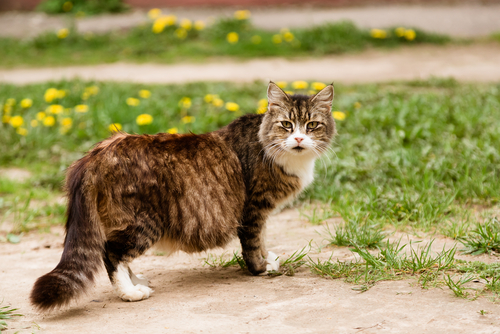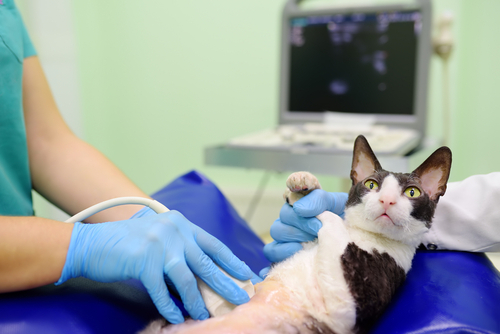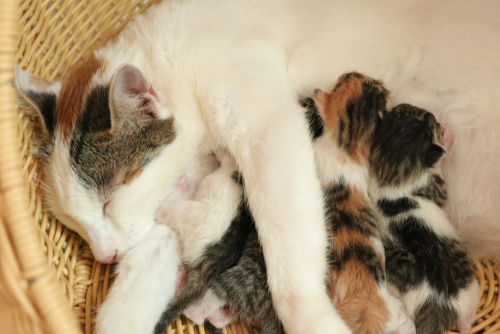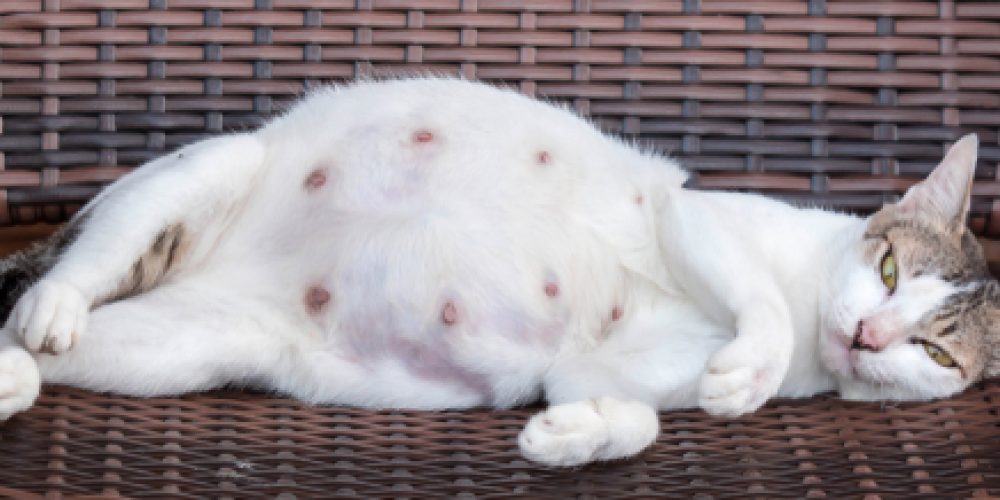Your cat’s chance of getting pregnant
Female cats, also known as queens, typically go into heat or season every 2-3 weeks and this can last almost all year long.
A single queen can have as many as 2 to 4 litters of kittens per year, since they can breed as early as 1 week after giving birth.
The same litter can have multiple fathers because queens may mate with more than one tomcat during their fertile period.

A brief overview of pregnancy in cats
Once fertilisation occurs, the gestation period for cats lasts an average of 65 days.
During pregnancy, a cat’s body undergoes several changes. In the early-term of pregnancy, you will hardly notice changes. As the pregnancy progresses, her tummy will start to become rounder and sag down, and the nipples may become more prominent and darker in colour.
Confirming pregnancy in cats is not as simple as urinating for a strip. There is no early blood test either. The only later blood test that can be done is a relaxin test. Confirming your cat’s pregnancy can also be done by: hands-on examination, ultrasound scan or x-rays.
Caring for a pregnant cat requires providing adequate nutrition and care during this time. This includes feeding a high-quality diet, deworming medication and getting the necessary vet check-ups.
For full details on pregnancy in cats click here.

The signs of labour
Cats give birth at around 8 to 9 weeks of pregnancy.
As the due date approaches, you may notice signs that indicate your cat is preparing to give birth. These signs include nesting behaviour, restlessness, panting, and a decrease in body temperature.
It’s essential to provide a quiet, comfortable space for the mother to give birth and to be prepared to assist if necessary.
When the time comes, the mother will go into active labour, and the first kitten is usually delivered within an hour of the contractions starting.
Signs you should call a vet during labour in cats
- Take your cat to the nearest vet practice if your cat has been straining for 20-30 minutes without delivering a kitten.
- If you see a kitten stuck.
- If your cat has heavy bleeding, pain, weakness, or any other signs of distress.
- If your cat is at day 71 of her pregnancy and hasn’t shown any signs of labour.
For more information on cats giving birth, including when to call a vet, click here.

The first days of newborn kittens
It’s crucial to monitor the kittens closely during the first few days of life.
Book a post-natal vet check-up and ensure they are nursing and gaining weight appropriately.











